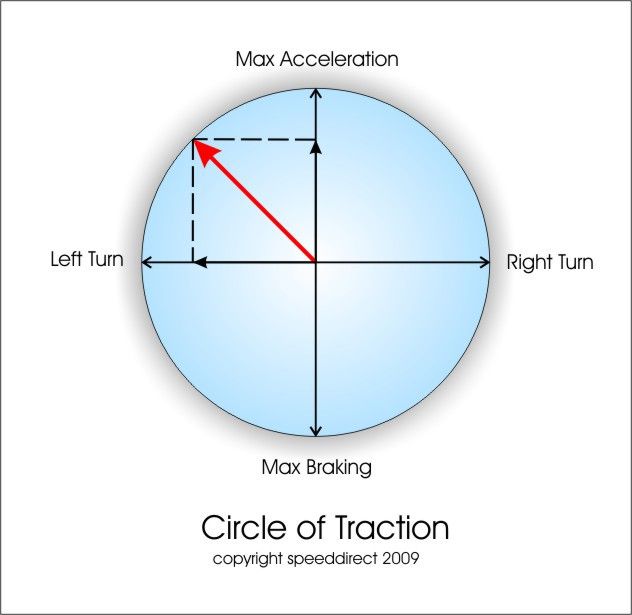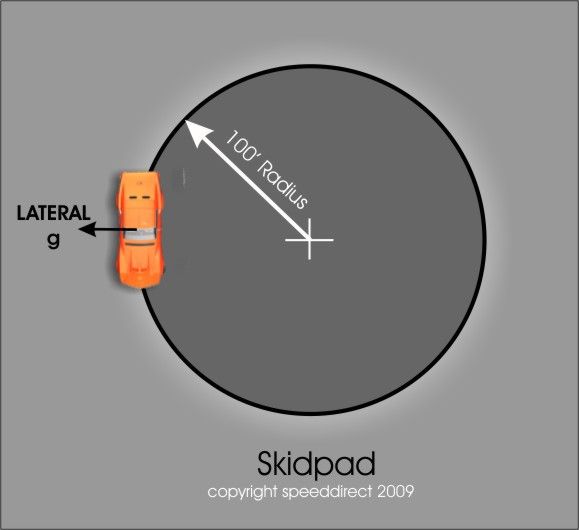Basic Cornering Concept: Circle of Traction
Circle of Traction & Skidpads
The Circle of Traction is a concept which chassis engineers use to determine how the available traction of the tires is being used. This is because there is only so much traction any given set of tires is capable of producing and it is distributed between cornering, braking, and acceleration. Using this concept it is possible to determine how much traction is left for cornering once the forces of braking or acceleration are accounted for.
What Does it Mean?
The figure below shows the Circle of Traction. Where the tire touches the road/track is called the contact patch. It is the total available area for traction and varies with the tire size and suspension geometry. From the drawing, the arrow in red represents a car accelerating in a left turn. It is the sum of the turning force and the acceleration force. The position of the arrow varies as the car negotiates a section of roadway or race track but one thing is constant; the available traction which remains invariable ignoring special conditions like downforce from aerodynamic devices.
Improve Your Lateral G!
It is possible to improve the g your car is capable of developing. As mentioned earlier, contact patch of the tire is a key element. To keep the patch maximized SpeedDirect offers a number of solutions from individual parts like upper control arms which greatly improve the suspension geometry or complete handling packages or stage kits which include a tuned assemblage of sway bars, adjustable shocks and spring rates to vastly improve traction and lateral grip over a stock suspension.

